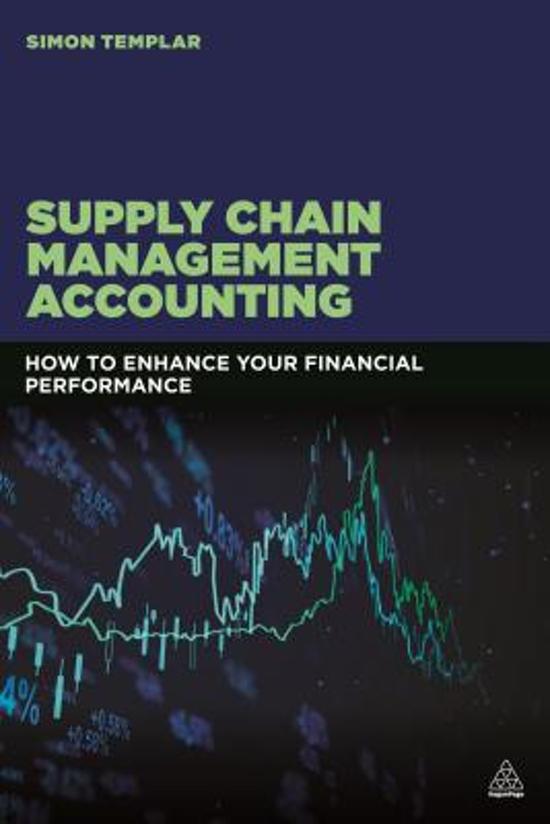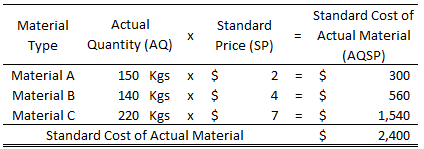
It was the duty of the management to utilise such funds properly and the reports of the financial accounting were designed to project how best the management discharged this stewardship function. In case of company, however the entity of the business is legally Accounting Assumptions separated from that of the owners. Practical difficulties arise by identifying business affairs of a group of companies under common management. The ending account balance is found by calculating the difference between debits and credits for each account.
GAAP are the concepts, standards, and rules that guide the preparation and presentation of financial statements. International accounting rules are called International Financial Reporting Standards (I.F.R.S.). Publicly traded companies (those that offer their shares for sale on exchanges in the United States) have the reporting of their financial operations regulated by the Securities and Exchange Commission (S.E.C.).
For example, a landscaping company signs a $600 contract with a customer to provide landscaping services for the next six months (assume the landscaping workload is distributed evenly throughout the six months). The customer sets up an in-house credit line with the company, to be paid in full at the end of the six months. The landscaping company records revenue earnings each month and provides service as planned. There also does not have to be a correlation between when cash is collected and when revenue is recognized.

For recording purposes, the revenue is recognized by the wholesaler in
July, when the coffee mugs were delivered to the coffeehouse. Financial reporting has long been a problem plaguing many organisations in the non-profit sector. This method also reveals a clear demarcation of accrued or deferred items of incomes and expenses. (ii) It fails to keep any record of such matters which cannot be expressed in terms of money— e.g., Human genius which may be highly productive, is not considered in accounting as there is no acceptable value in exchange. But intellectual property rights are accepted under international law and can be patented. In applying their conceptual framework to create standards, the IASB must consider that their standards are being used in 120 or more different countries, each with its own legal and judicial systems.
• To be logical & consistent in recording the
This means that IFRS interpretations and guidance have fewer detailed components for specific industries as compared to US GAAP guidance. Making assumptions in accounting can be risky and lead to incorrect or partial information. Accountants must understand the risks of making assumptions when preparing and analyzing financial documents.
Monthly, quarterly, and annual reporting are common time periods in and outside of agribusiness. While some farmers who are owed income tax from the government are lax at record-keeping, this assumption falls under the category of due diligence. Farmers and ranchers who are serious about financial analysis will have no issue understanding the importance of this assumption. This is the practice of using same accounting standards for all accounting periods.
Concepts In Practice
We go into much more detail in The Adjustment Process and Completing the Accounting Cycle. The accrual accounting method aligns with this principle, and it records transactions related to revenue earnings as they occur, not when cash is collected. The revenue recognition principle may be updated periodically to reflect more current rules for reporting. Revenue and expense recognition timing is critical to transparent financial presentation. Even though GAAP is required only for public companies, to display their financial position most accurately, private companies should manage their financial accounting using its rules. Two principles governed by GAAP are the revenue recognition principle and the matching principle.
- In conclusion, accounting assumptions provide the foundation for generally accepted accounting principles (GAAP).
- Upon investment of money in the business by the proprietor, it is deemed that the proprietor has given money, and the business has received the money.
- The monetary unit assumption means that money is the common denominator of economic activity and provides an appropriate basis for accounting measurement and analysis.
- The fundamental accounting assumptions are the assumptions made to generate financial statements according to generally accepted accounting principles.
- In Australia, the Australian Accounting Standards Board (AASB) implements the IFRS with a few small tweaks for Australian regulatory requirements – but overall it can be said that we are following IFRS.
- Further, assumptions explain how the financial statements will be prepared and help ensure consistency across multiple reporting periods.
Within a cash accounting framework, there is no specific method to value the “revenue” produced through this trade. Accrual accounting, on the other hand, has a specific technique to recognize the revenue. This principle is used for the recognition of revenue for
both goods and services.
Values attached to assets will be on the basis of its current
This statement represents the economic entity assumption, the first basic assumption of financial accounting. The disclosure principle simply means the declaration of the accounting principles involved in preparing and presenting financial statements. The ‘Disclosure’ helps a layperson immediately understand the basic principles underlying the financial statement of a company. The SEC is an independent federal agency that is charged with protecting the interests of investors, regulating stock markets, and ensuring companies adhere to GAAP requirements. Fundamental accounting principles are the underlying assumptions used to calculate financial statements. These fundamentals are not subject to change, so they serve as a stable reference point for all future transactions.
- In other words, a company keeps its activity separate and distinct from its owners and any other business unit.
- The conceptual framework sets the basis for accounting standards set by rule-making bodies that govern how the financial statements are prepared.
- In order to record a transaction, we need a system of monetary measurement, or a monetary unit by which to value the transaction.
- This states that accounting information reflects the assumption that a business will continue operating instead of being closed or sold.
The period assumption assumes that the life of the company can be divided into time periods, such as months and years. So, this assumption pretty much says that the the lifespan of my business can be divided up into months and years, rather than simply a single, never-ending continuum of reporting. The primary exceptions to this historical cost treatment, at this time, are financial instruments, such as stocks and bonds, which might be recorded at their fair market value. There also does not have to be a correlation between when cash is collected and when revenue is recognised.
The money measurement assumption underlines the fact that in accounting, every worth-recording event, happening, or transaction is recorded in terms of money. The economic entity assumption means that economic activity can be identified with a particular unit of accountability. It is most desirable that the dealings and transactions of the partnership business should be recorded in a firm’s books. For example, suppose a neighborhood coffee house orders coffee mugs from a coffee wholesaler in June. The coffee house takes delivery
of the new mugs in July and pays for the order in August. The wholesaler does
not recognize the revenue from this sale in June, when the order was placed, or
in August, when the cash was received.
Full Disclosure Principle
The cost principle, also known as the historical cost principle, states that virtually everything the company owns or controls (assets) must be recorded at its value at the date of acquisition. The customer did not pay cash for the service at that time and was billed for the service, paying at a later date. When should Lynn recognize the revenue, on August 10 or at the later payment date? She provided the service to the customer, and there is a reasonable expectation that the customer will pay at the later date. Some companies that operate on a global scale may be able to report their financial statements using IFRS. The SEC regulates the financial reporting of companies selling their shares in the United States, whether US GAAP or IFRS are used.
Whether explicitly stated in mission statements, or tacitly implied, one common goal shared by producers is preserving the land for future generations. However, some practical difficulties may arise by defining a business entity for which accounts are kept specially in case of sole proprietorship and partnership business and that of the people who own it. That is, a sole trader is personally liable for his business debts and may be required to use non-business (Personal) assets in order to pay-off the business debts. We define an asset to be a resource that a company owns that has an economic value. We also know that the employment activities performed by an employee of a company are considered an expense, in this case a salary expense. In baseball, and other sports around the world, players’ contracts are consistently categorized as assets that lose value over time (they are amortized).
For example, from a legal point of view, a body corporate is a separate entity, and the sole trader and his business are regarded as the same thing. The assumption of the separate entity applies to all forms of business organizations. According to this assumption, the business is treated as a unit or entity apart from its owners, creditors, managers, and others. That is, revenue in Country A means the same thing in Country B. The IASB documents these standards in the International Financial Reporting Standards – usually referred to as IFRS. In Australia, the Australian Accounting Standards Board (AASB) implements the IFRS with a few small tweaks for Australian regulatory requirements – but overall it can be said that we are following IFRS.
Double-Entry Bookkeeping
A business is assumed to continue indefinitely in order to ascertain the state of affairs of the business at different intervals. We are to choose the intervals for ascertaining the financial position and the operational results at each such interval which, in other words, is known as Accounting Period. In other words, a business is viewed as mechanism for continuous additions of value to the resources or utility used by such unit. The success or failure of the business is measured by the difference between the value of its output sale and/or services and the cost of such output. Financial accounting relies on several underlying concepts that have a significant impact on the practice of accounting. Let’s say there were a credit of $4,000 and a debit of $6,000 in the Accounts Payable account.

These principles
guide the methods and decisions for a business over a short and long term. For
both internal and external reporting purposes, it is important to understand
the concepts presented below because they serve as a guideline to the analysis
of financial reporting issues. Ensures that businesses accurately report their transactions on their financial statements.
That comes from having a common set of accounting principles, assumptions and concepts that are the same worldwide. The reliability accounting assumption states that only transactions that can be proven should be recorded in accounting practices. And what this means is that businesses must be able to prove transactions through such things as receipts, billing statements, invoices, and bank statements.
SCOR announces the publication of its interim financial report for the six months ended June 30, 2023 – Yahoo Finance
SCOR announces the publication of its interim financial report for the six months ended June 30, 2023.
Posted: Fri, 28 Jul 2023 07:00:00 GMT [source]
‘Operate as normal’ means that the business will have sufficient funds from revenue to pay their expenses and debts as they fall due. The ‘foreseeable future’ is quite an uncertain time period, but in most countries – this is prescribed to be twelve months. A company that is failing to repay bank loans and experiencing declining sales is likely to NOT be a going concern. This can be worded in the business press in many different ways that can cause confusion – examples include ‘the business is experiencing difficulties in continuing as a going concern’, the business is ‘not a going concern’. The people and entities interacting with businesses all around the world use accounting information to make decisions every single day. But how can businesses be compared and evaluated against each other with any level of reliability?
This states that accounting information reflects the assumption that a business will continue operating instead of being closed or sold. When we create financial statements or when we read into financial statements, we must assume that our company will go on forever. Users need to know a company’s performance and economic status on a timely basis so that they can evaluate and compare firms and take appropriate actions. In case this concept is not followed, the fact should be disclosed in the financial statements together with reasons. In these cases, a total revaluation of assets and liabilities can provide information that closely approximates the company’s net realizable value. In other words, a factor, an event that cannot be expressed in terms of money, is not recorded in the account books.
Since the company has provided the service, it would recognise the revenue as earned, even though cash has yet to be collected. Finally – the period concept also means that businesses should only include transactions from that period when preparing the financial statements. You can’t include any transactions from a future period, or one in the past that has already been reported on (otherwise you’d have double counting). Matching Principle – This principle mandates that the expenses of a business need to line up with
its revenue. The expense or cost of
doing business is recorded in the same period as the revenue that has been
generated as the result of incurring that cost. At this point, the
difference between the revenue and expense is determined as the gross profit
from the sale.
